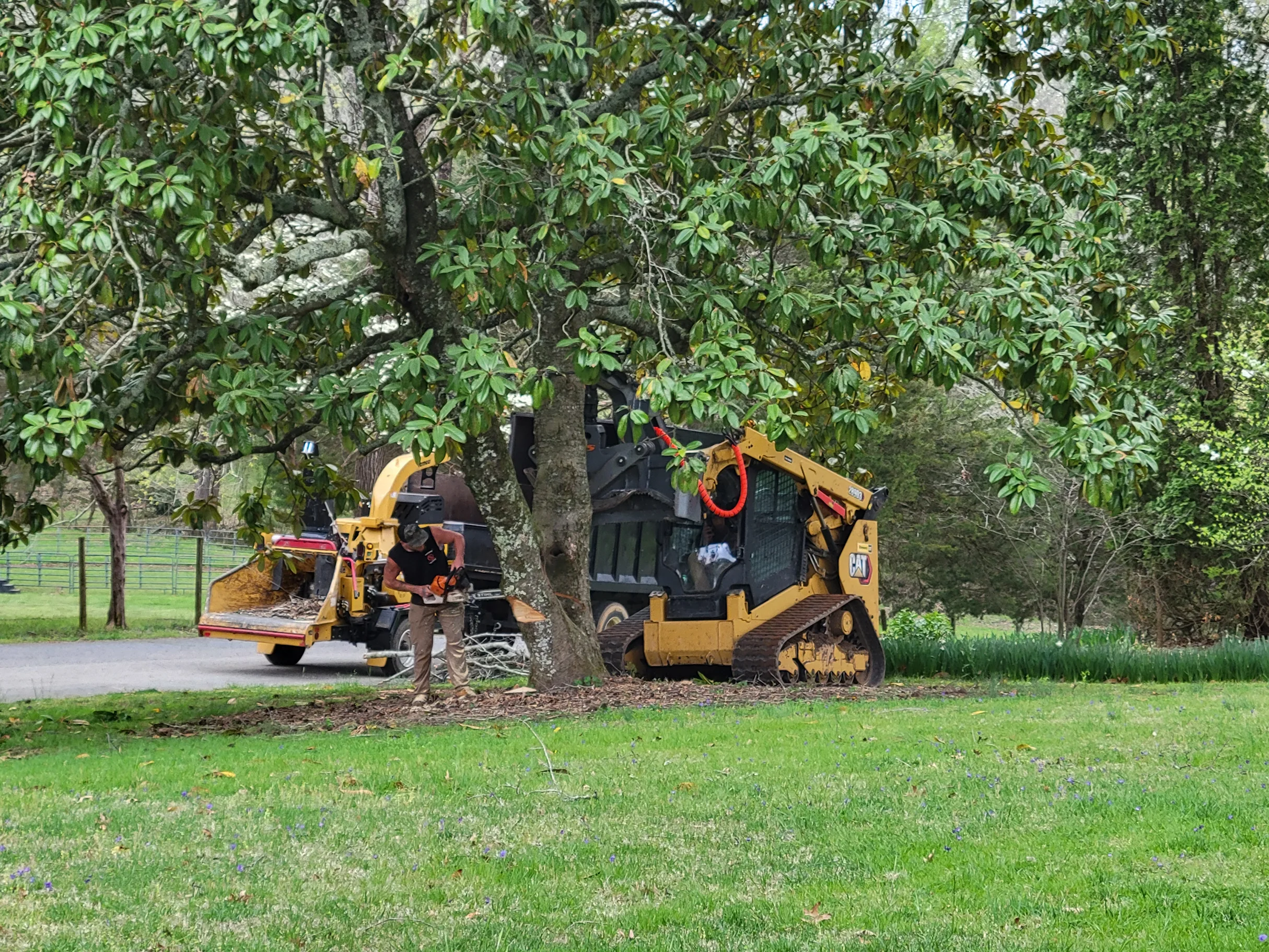Proper trimming techniques can enhance the health and beauty of your trees. Learn when and how to prune trees for strong growth and safety.
How to trim trees properly is essential for healthy growth, strong structure, and long-term vitality. Trimming your trees the right way encourages new growth, prevents disease, and reduces the risk of broken branches. However, bad pruning can damage trees, slow growth, and even shorten their lifespan.
In this guide, you’ll learn:
- Why tree trimming is important
- The best time to trim trees
- Proper techniques for safe and effective trimming
- Common mistakes to avoid
- When to call a professional tree service
Why Trimming Your Trees Matters
Tree trimming isn’t just about making trees look neat—it’s about guiding their growth and keeping them strong. Regular trimming prevents disease, encourages healthy branch development, and reduces the risk of storm damage.
Here are the key benefits of proper tree trimming:
- Encourages Healthy Growth – Cutting away weak or overgrown branches directs nutrients to the healthiest parts of the tree.
- Reduces Risk of Falling Branches – Weak limbs are more likely to break in storms or high winds.
- Prevents Disease and Pests – Removing diseased branches stops infections from spreading.
- Increases Sunlight & Air Circulation – More light and airflow keep trees and surrounding plants healthy.
- Improves Curb Appeal – Well-maintained trees enhance the beauty and value of your property.
Trimming is essential, but timing and technique are key. Let’s go over when and how to trim your trees the right way.
The Best Time to Trim Trees
When you trim a tree matters just as much as how you do it. Different seasons affect trees in different ways, and improper timing can slow growth or cause stress.
Late Fall to Winter (Best for Most Trees)
- Trees are dormant, meaning less stress and faster healing.
- Insects and diseases are less active, reducing infection risks.Ideal for oak, maple, ash, and fruit trees.
Early Spring (Good for Some Trees, Risky for Others)
- Best for flowering trees like dogwoods and magnolias, which should be trimmed after blooming.
- Avoid heavy pruning, as trees are using energy for new growth.
Summer (Light Pruning Only)
- Trim only to shape trees or remove weak limbs.
- Avoid major cuts, as summer trimming can slow growth.
Avoid Trimming in Late Spring & Early Fall
- Late spring trimming removes energy-storing leaves, weakening the tree.
- AEarly fall pruning leaves trees vulnerable to disease and decay.
The Right Way to Trim Trees Properly
To keep trees healthy, use the right techniques and tools. Bad cuts can damage trees, leading to disease, weak regrowth, or even premature death.
Use Sharp, Clean Tools
- Hand pruners – Best for small branches (under 1 inch thick).
- Loppers – Good for medium branches (1–2 inches thick).
- Pruning saws – Needed for thicker branches.
- Chainsaw – For large branches, best handled by professionals.
Always clean your tools before and after trimming to prevent spreading disease.
Follow the 3-Cut Method for Large Branches
For branches over 2 inches thick, never cut straight through. This can cause bark tearing, damaging the tree. Instead, use the 3-cut method:
- First Cut: Make a small notch on the underside of the branch (6–12 inches from the trunk).
- Second Cut: Cut from the top a few inches past the notch to remove most of the branch.
- Third Cut: Trim the remaining stub just outside the branch collar (the swollen area near the trunk).
Why? This prevents bark tearing and helps the tree heal faster.
Trim at the Right Spot (Branch Collar Method)
- Always cut just outside the branch collar, the swollen area at the base of a branch.
- Cutting too close damages the tree, while cutting too far leaves an open wound.
- Never leave long stubs, as they don’t heal properly and invite disease.
Remove Dead, Diseased, and Crossing Branches
- Deadwood – Prune branches that are brittle, hollow, or missing bark.
- Diseased limbs – Look for dark, sunken, or moldy spots and remove them immediately.
- Crossing branches – If two branches rub against each other, trim the weaker one to prevent wounds.
Maintain Proper Canopy Shape
- Avoid over-trimming, which can weaken the tree.
- Remove no more than 25% of the tree’s canopy at a time.
- Trim to maintain a strong central leader (main trunk) for better stability.
Common Tree Trimming Mistakes to Avoid
- Topping the Tree – Cutting off the top of a tree stunts growth and weakens its structure.
- Over-Pruning – Removing too many branches can stress or kill the tree.
- Cutting Too Close to the Trunk – This damages the branch collar, slowing healing.
- Ignoring Disease or Pests – If you see signs of disease, treat the tree immediately.
Proper trimming promotes long-term tree health, while bad cuts can cause irreversible damage.
When to Call a Professional Tree Service
Some tree trimming jobs are best left to experts—especially when safety is a concern. Call a professional if:
- The tree is too tall – Climbing trees without proper equipment is dangerous.
- You need to trim near power lines – Electrical hazards require expert handling.
- A tree is diseased – Incorrect trimming can spread infections.
- Large, heavy branches need removal – Falling branches can cause serious injury or property damage.
Professional tree services have the right tools, training, and experience to trim trees safely and effectively.
Get Expert Tree Trimming – Call Bark Busters Tree Service Today!
Want to keep your trees healthy, strong, and looking their best? Let the experts handle it!
- Bark Busters Tree Service provides:
- Professional tree trimming & pruning
- Disease & pest prevention
- Safe removal of dead or hazardous branches
📞 Call Bark Busters Tree Service today for expert tree trimming and care in Tennessee & Georgia!
5899 TN-58, Harrison, TN 37341






